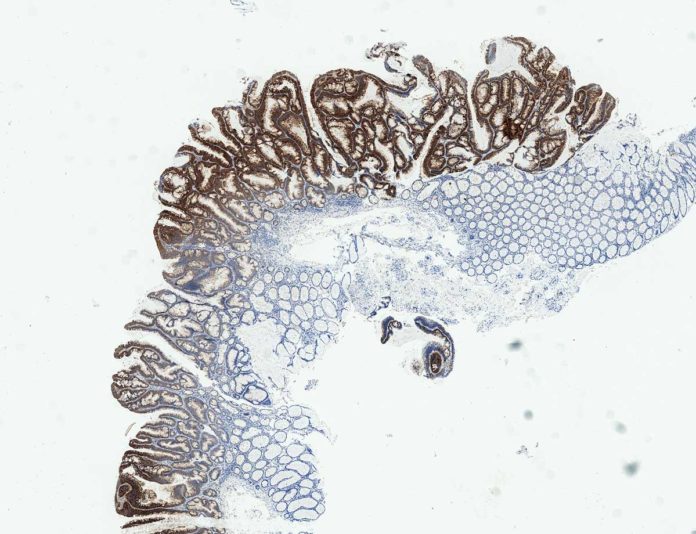Inherited gene mutations that increase the risk of colon cancer can be passed through families, but these inherited genes are linked to only a small percentage of colon cancers. Around 80 percent of all colon tumors include mutations of the tumor suppressor protein APC (Adenomatous polyposis coli). This suppressor protein prompts an overactive Wnt signaling pathway.
Thus, Wnt is considered as one of the most important biomarkers for colon cancer and as a possible target for new colon cancer therapies. Past attempts of blocking the Wnt signaling pathway have failed due to strong side effects as Wnt messenger plays a vital role in stem cell formation.
In a new study by the German Cancer Consortium, scientists discovered for the first time a tumor-specific molecular reaction chain that is triggered by Wnt.
For the study, scientists used three-dimensional colon cultures (‘organoids’) that they had grown from healthy human colon tissue.
Organoids represent to another technique in biomedical science. Intestinal cells are replicated as a unified cell structure in the research center with the goal that they consolidate highlights like the organ they speak to and, for instance, can be concentrated to examine how drugs work in the colon.
Utilizing these mini-guts, the specialists could analyze Wnt action in colon tumors and in the stem cells from a healthy gut. To do this, they switched off the tumor suppressor protein APC, which caused tumor precursor cells (adenomas) to develop. Curiously, this caused Wnt to enact a totally different palette of genes than in the healthy cells.
Henner Farin, head of a DKTK young investigator group at Georg Speyer House in Frankfurt said, “Here we see two completely different molecular responses between the healthy cells and the tumor cells. This means that the increased Wnt signal per se is not significant for diagnosis and prognosis. You have to look at the downstream gene expression patterns.”
“The results also explain why until now there have been contradictory reports: sometimes a high Wnt signal is linked to a poor prognosis and sometimes to a good one.”
The specialists related the distinctive expression patterns with the molecular information of large patient cohort and were then ready to distinguish subtypes with favorable and less progression. What’s more, the group distinguished a scope of protein markers that could be utilized to identify tumors later on.
Henner Farin said, “The researchers see great potential in their organoid approach for discovering and targeting new vulnerabilities in tumor cells without harming the healthy cells. Until now, there were no suitable in vitro models for neatly comparing healthy cells and tumor cells. Patient samples are genetically very variable and there is often no comparison with normal cells. With organoids, we can zoom in on the tumor-specific components in cellular signaling pathways for other types of cancer as well, and discover new cancer-specific vulnerabilities.”
The study is published in the Journal of Experimental Medicine.
